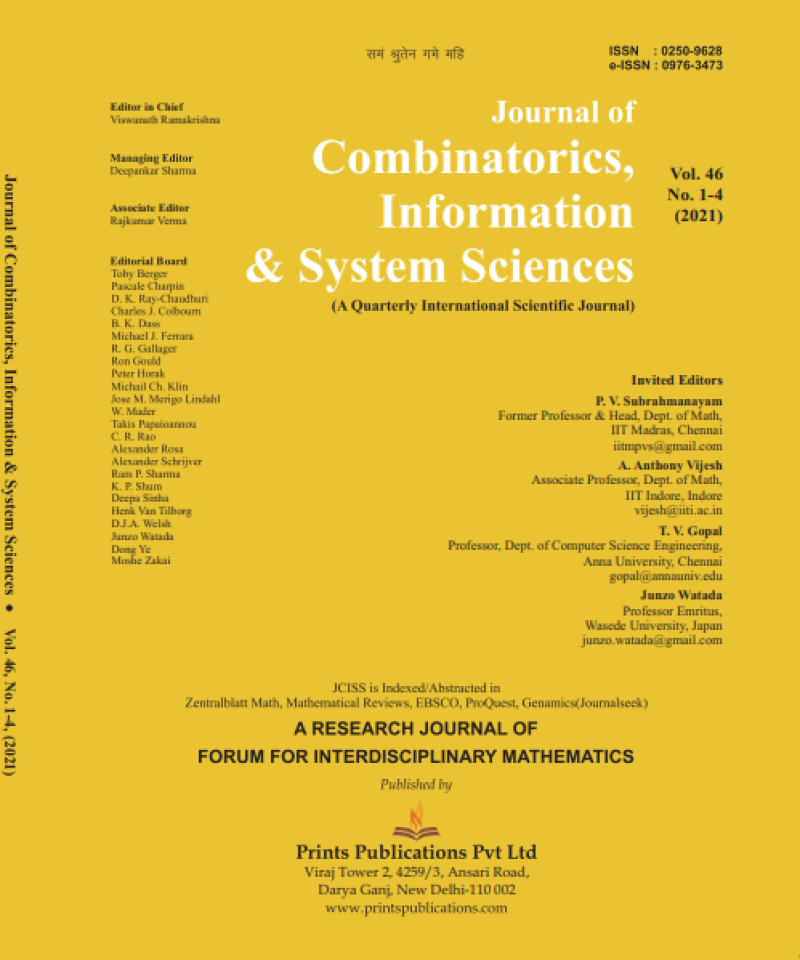Journal of Combinatorics, Information & System Sciences : (A Quarterly International Scientific Journal)
Published in Association with Forum for Interdisciplinary Mathematics
Current Volume: 47 (2022 )
ISSN: 0250-9628
e-ISSN: 0976-3473
Periodicity: Quarterly
Month(s) of Publication: March, June, September & December
Subject: Mathematics
DOI: 10.32381/JCISS
Online Access is free for all life members of JCISS.
Axis-Angle Representations in Dimension Five
By : Emily Herzig, Viswanath Ramakrishna, Sabindra Singh Bal
Page No: 301-341
Abstract:
A very popular tool to explore three dimensional rotations is the axis-angle representation. It assists in the visualization and analysis of a three dimensional proper rotation, because it reduces its study to that of a two dimensional proper rotation. In this work we achieve something similar for five dimensional proper rotations, i.e., we show how to reduce their study to those of either two or four dimensional proper rotations. It is expected that this will simplify the analysis of five dimensional rotations. In particular, the generic proper five dimensional rotation can be now seen as a triple of unit vectors, the first of which is in R5 and the remaining two lie in R4. More specifically, closed form expressions are provided for both the fixed point set of a matrix in G Î SO(5, R) (the axis) and the complementary proper rotation that it performs in the orthogonal complement to the axis (the “angle”). Two derivations are given. The first uses the entries of the matrix G directly and the second uses the Lie algebra of the covering group of SO(5, R). The former method does not produce tractable expressions for the angle, while the latter method succeeds at both. In the process, closed form expressions for logarithms in the covering group of SO(5, R) are also given. Throughout we make systematic use of the special structure (palindromy or skew-palindromy) of the characteristic polynomial in both SO(5, R) and its covering group. It is noteworthy that the methods herein do not require any numerical eigenvector calculations. Instead, they are algorithmic. Comparisons to other representations of SO(5, R) are also given.
Authors :
Emily Herzig
Department of Mathematics,Texas Christian University.
Viswanath Ramakrishna
Department of Mathematical Sciences, University of Texas at Dallas, Richardson, TX.
Sabindra Singh Bal
Department of Mathematical Sciences, University of Texas at Dallas, Richardson, TX.
DOI: https://doi.org/10.32381/JCISS.2020.45.1-4.9



